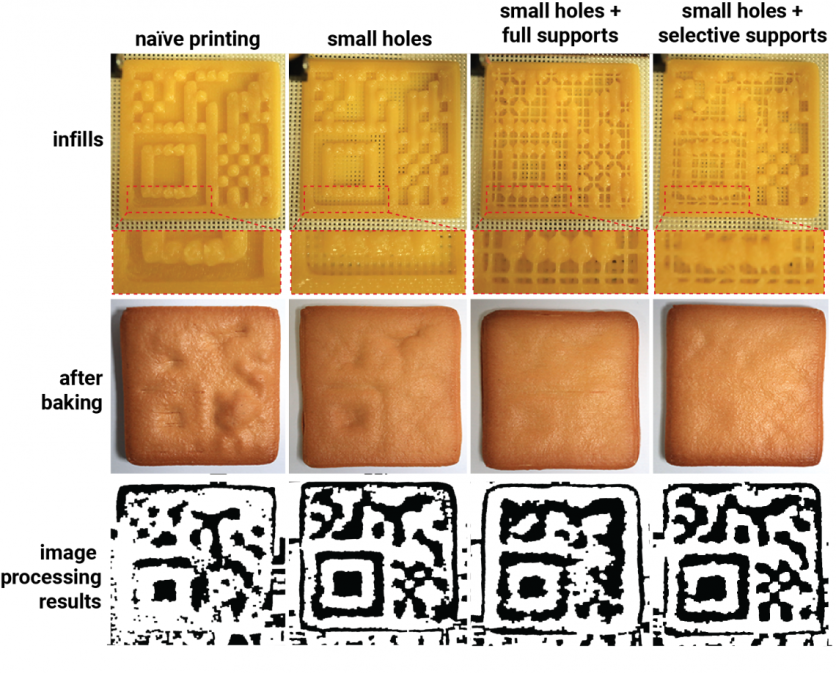Our lives were made considerably simpler by QR codes, which were developed in 1994 by the Japanese vehicle company Denso Wave. QR codes often include data for a tracker, location, or identification that points people to a website or any application.
But what if you can print a QR code for your food? Would you still eat it?
Researchers from Osaka University researchers created "interiqr" -a cutting-edge three-dimensional printing technique for integrating edible QR codes in the interior of cookies, as reported first by Interesting Engineering.

Edible Food Tags
Tags with embedded data are often used in the food industry. Fruit stickers are one of the most common examples, but radio frequency identification tags, which use electromagnetic fields to automatically identify and track objects, are considered to be more advanced.
As the world works to decrease excessive packaging, the race is on to develop edible food tags that are non-toxic, don't change the flavor or appearance of the food, and can be read without damaging the food itself. The study team from Osaka University made an effort to solve each of these issues.
The taste and flavor difficulties are resolved by using a QR code that is created from the cookie itself as the tag. The researchers claim that the cookie's exterior appearance hasn't changed at all because all of the information is located inside the meal.
At every point during the journey of the cookie from production to stomach - producers, merchants, and consumers can easily access the data since a basic backlight can be employed to make the QR code visible.
Read also: 'Chameleon Robots:' These Robots Can Change Colors and Mimic Their Surroundings Through 3D Printing
3D-Printing Cookies
Yamato Miyatake, the study's lead author, said that 3D printers may now be used to produce a variety of foods.
"We realized that the insides of edible objects such as cookies could be printed to contain patterns of empty spaces so that, when you shine a light from behind the cookie, a QR code becomes visible and can be read using a cellphone," Miyatake said in a statement.
According to Kosuke Sato, the study's senior author, the team's use of 3D printing is a great illustration of the digital transformation of food that they hope will enhance food traceability and safety.
Sato added that this technology can also be used to create unique food experiences through augmented reality, which is a growing field in the food sector.
The research team also hopes that this novel technique of integrating edible information into food will be crucial for waste reduction because food tags and packaging are significant sources of waste globally.
Related Article : Scientists Are 3D Printing Insects and Mixing Them With Vegetables To Help Solve Food Crisis
This article is owned by Tech Times
Written by Joaquin Victor Tacla




